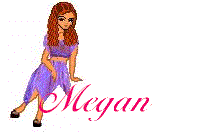As intimated by its name, the actual embroidery in this technique is stitched on the “wrong” side of the fabric, with the colour shadowed when looked at from the right side. Outline stitches are worked, as normal, on the right side of the fabric.
As you can imagine, it is essential in this form of embroidery that your stitching technique is impeccable. This is not a form of embroidery where you can get away with knotting to start or finish, or have a very loose tension.
Shadow embroidery can be done either by hand or machine. When stitching on the machine, you should use a general satin stitch on a firm tension for the embroidery.
Your options are much wider if you chose to hand stitch this type of work. The most commonly used stitch is Herringbone stitch, however satin stitch and long and short stitch can give you very interesting effects.
You should avoid using knotted filling stitches (for example: detatched buttonhole, or chain) or any filling stitch that requires couching.
In short, you should use a stitch that where your needle only enters the fabric at the edge of your design so that no actual stitching (except for the outline stitching) shows on the ‘right’ side of the fabric.
Shadow embroidery needs to be done on very fine fabric – fine cotton, batiste, swiss muslin, etc. For that reason, you should use a spray on, water soluble stabiliser on the fabric.
Because of the fineness of the fabric, getting the pattern onto the fabric is the easiest part of the whole project. You can usually lay the fabric onto the pattern and use a pencil to just trace the design.
However a way to get the pattern, plus stabilise the fabric, is to transfer the pattern to sole soluble stabiliser, then baste it to the fabric. Hoop the two layers as a sandwich and stitch.
When you have finished, carefully remove the basting and then wash the stabiliser from the piece of work.
You can use either cotton or silk thread, but it should be very fine. Use no more than one or two strands and ensure that they lie flat on the fabric and doesn’t creat ridges.
Most shadow embroidery is done using white or pastel coloured fabric and bright colours, or white fabric and white thread. You can, however, get some incredible effects using a black sheer fabric and white, grey or silver (metallic) thread.
As with all embroidery, experiment and see which works the best for you.
Recommended Reading
Is there anything that you would particularly like to see an article on? If so, please contact me with your suggestions.
Happy Stitching

© 2010 Megan McConnell


